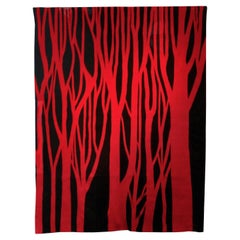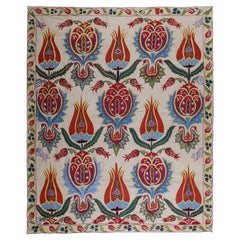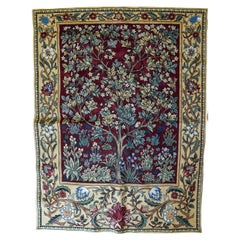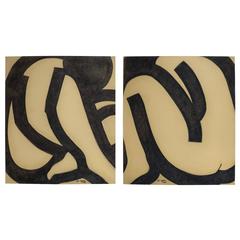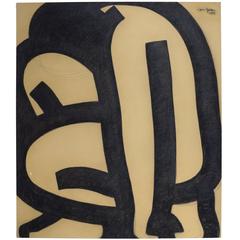Jan Yoors Furniture
The life of Jan Yoors had the drama and scope of a Dumas novel. As a youth, he traveled Europe with a community of the Rom (a people better known by the disused term Gypsies); he later saw action in the World War II resistance and twice escaped from Nazi imprisonment. At the same time, Yoors was a prolific and protean creative artist: a painter, photographer, sculptor, filmmaker and writer — though he is best known among art lovers for his vibrant modernist tapestries.
The son of a stained-glass artist and a teacher, Yoors was a restless and curious child. At age 12, he wandered into a Rom encampment on the outskirts of his native Antwerp. The inquisitive boy was welcomed, and (with the consent of his liberal-minded parents) that year and throughout his adolescence, Yoors roamed the continent with what became his extended Rom family. (His travels would become the basis of his seminal 1967 memoir, The Gypsies.) At 17, Yoors began studying painting and sculpture in Brussels, and when the war interrupted his education he ran guns for the Belgian underground and spied for the Allies. He was twice captured and once escaped, the story goes, by posing as an SS officer and leading a group of fellow inmates to safety. After the war, Yoors resumed his art studies in London. There, a chance visit to an exhibit of medieval and modern French tapestries prompted him to take up a new artistic medium.
The vivid aesthetics and tactility of tapestries fascinated Yoors, along with the communal method by which they are made. Most of Yoors’s tapestry designs were executed in New York, where he moved in 1951 with his wife, Annabert, and an old friend of hers named Marianne Citroen, who had joined the Yoors household in London. The three lived in a blithe, bohemian ménage in Greenwich Village. They learned tapestry-making techniques together, and the women operated hand-built vertical looms. Yoors’s early designs were simple and figurative, but he developed a bold and energetic abstract style notable for its dazzling colors and black contrasts. By the 1960s, Yoors was winning praise from art critics like Robert Hughes and commissions for large-scale pieces from architects such as Gordon Bunshaft — all the while pursuing a separate career as a documentary photographer. Yoors died unexpectedly from complications of diabetes at age 55. As you will see on these pages, he left behind a powerful and captivating artistic legacy.
1960s Vintage Jan Yoors Furniture
Wool
21st Century and Contemporary Turkish Suzani Jan Yoors Furniture
Cotton, Silk
20th Century Jan Yoors Furniture
Cotton
17th Century Belgian Antique Jan Yoors Furniture
Wool, Silk
1910s French Vintage Jan Yoors Furniture
Wool
1920s French Vintage Jan Yoors Furniture
Wool
Early 1900s French French Provincial Antique Jan Yoors Furniture
Wool
17th Century European Antique Jan Yoors Furniture
Wool, Silk
1920s French Vintage Jan Yoors Furniture
Wool
1950s Egyptian Mid-Century Modern Vintage Jan Yoors Furniture
Wool
1940s Persian Navajo Vintage Jan Yoors Furniture
Wool
Early 19th Century Belgian Baroque Antique Jan Yoors Furniture
Wool, Silk
Mid-20th Century Egyptian Egyptian Jan Yoors Furniture
Wool
